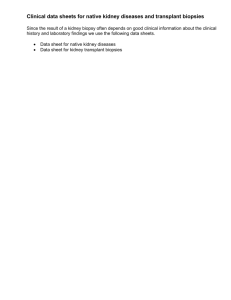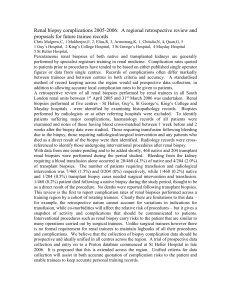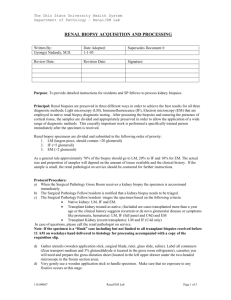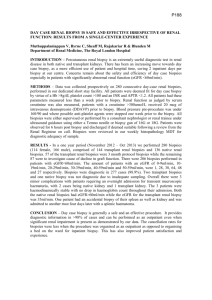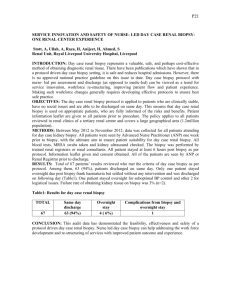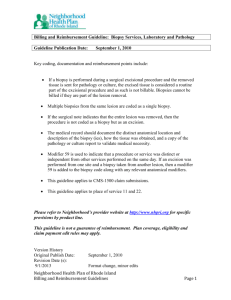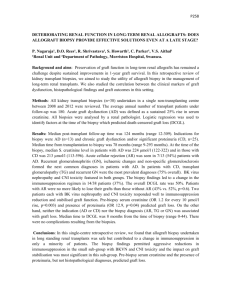BACKGROUND: As the elderly population increases, the incidence
advertisement
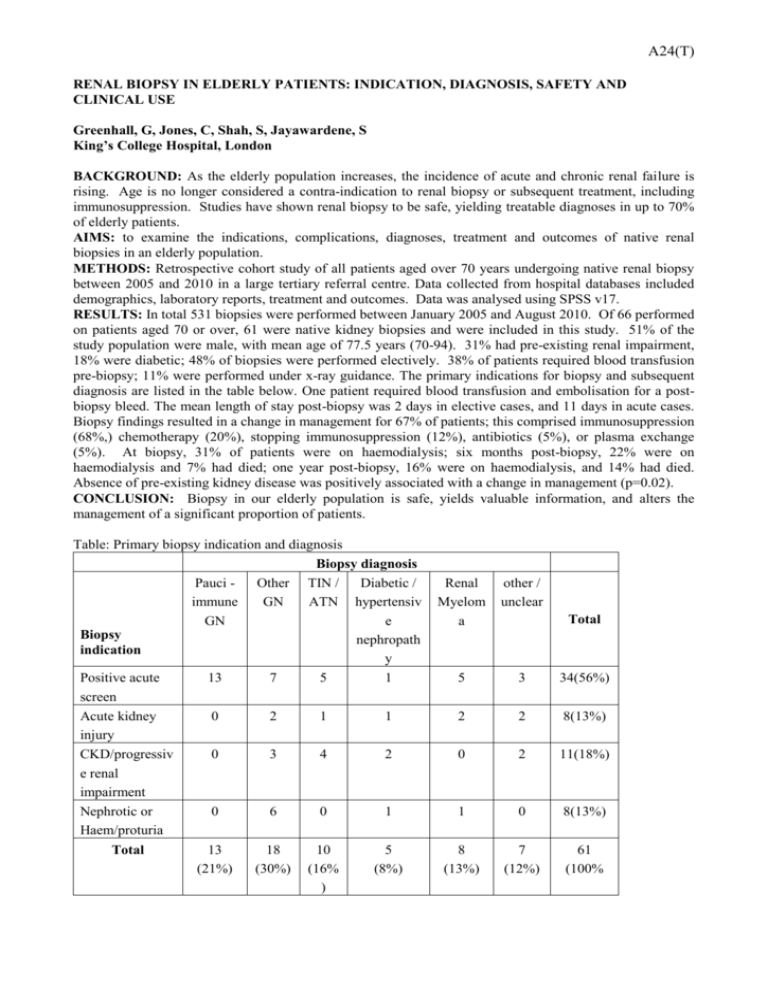
A24(T) RENAL BIOPSY IN ELDERLY PATIENTS: INDICATION, DIAGNOSIS, SAFETY AND CLINICAL USE Greenhall, G, Jones, C, Shah, S, Jayawardene, S King’s College Hospital, London BACKGROUND: As the elderly population increases, the incidence of acute and chronic renal failure is rising. Age is no longer considered a contra-indication to renal biopsy or subsequent treatment, including immunosuppression. Studies have shown renal biopsy to be safe, yielding treatable diagnoses in up to 70% of elderly patients. AIMS: to examine the indications, complications, diagnoses, treatment and outcomes of native renal biopsies in an elderly population. METHODS: Retrospective cohort study of all patients aged over 70 years undergoing native renal biopsy between 2005 and 2010 in a large tertiary referral centre. Data collected from hospital databases included demographics, laboratory reports, treatment and outcomes. Data was analysed using SPSS v17. RESULTS: In total 531 biopsies were performed between January 2005 and August 2010. Of 66 performed on patients aged 70 or over, 61 were native kidney biopsies and were included in this study. 51% of the study population were male, with mean age of 77.5 years (70-94). 31% had pre-existing renal impairment, 18% were diabetic; 48% of biopsies were performed electively. 38% of patients required blood transfusion pre-biopsy; 11% were performed under x-ray guidance. The primary indications for biopsy and subsequent diagnosis are listed in the table below. One patient required blood transfusion and embolisation for a postbiopsy bleed. The mean length of stay post-biopsy was 2 days in elective cases, and 11 days in acute cases. Biopsy findings resulted in a change in management for 67% of patients; this comprised immunosuppression (68%,) chemotherapy (20%), stopping immunosuppression (12%), antibiotics (5%), or plasma exchange (5%). At biopsy, 31% of patients were on haemodialysis; six months post-biopsy, 22% were on haemodialysis and 7% had died; one year post-biopsy, 16% were on haemodialysis, and 14% had died. Absence of pre-existing kidney disease was positively associated with a change in management (p=0.02). CONCLUSION: Biopsy in our elderly population is safe, yields valuable information, and alters the management of a significant proportion of patients. Table: Primary biopsy indication and diagnosis Biopsy diagnosis TIN / Diabetic / ATN hypertensiv e nephropath y 5 1 Pauci immune GN Other GN Renal Myelom a other / unclear Positive acute screen Acute kidney injury CKD/progressiv e renal impairment Nephrotic or Haem/proturia 13 7 5 3 34(56%) 0 2 1 1 2 2 8(13%) 0 3 4 2 0 2 11(18%) 0 6 0 1 1 0 8(13%) Total 13 (21%) 18 (30%) 10 (16% ) 5 (8%) 8 (13%) 7 (12%) 61 (100% Biopsy indication Total
